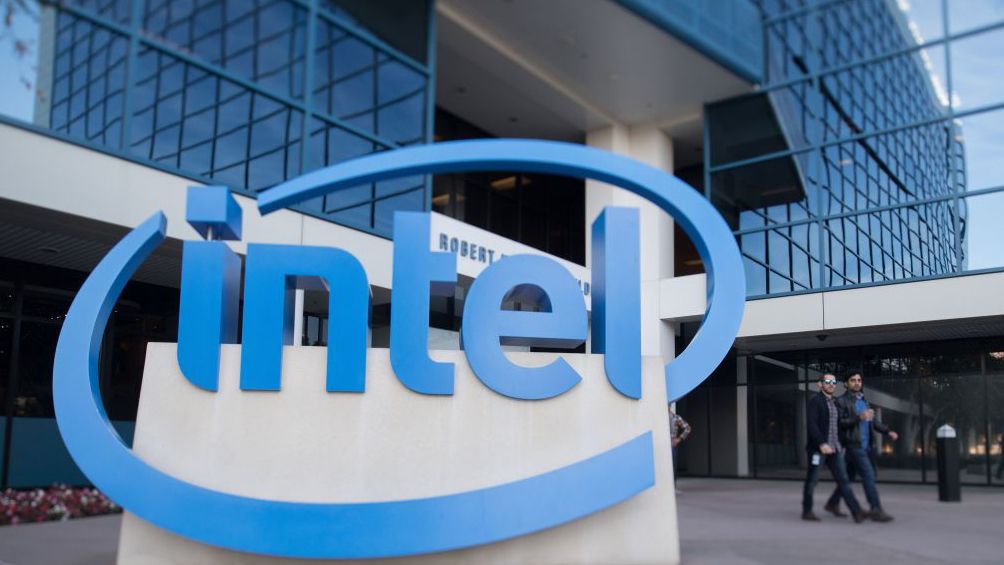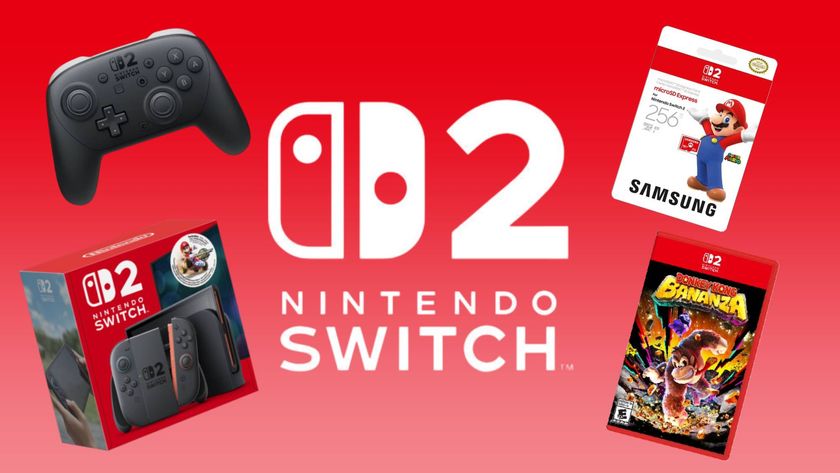Intel 11th Gen Tiger Lake CPUs unveiled with Xe graphics, Evo brand and 4.8Ghz speeds
Intel 11th Gen Tiger Lake chips will come to 150 different devices

Intel has never been in this position before. Abandoned by Apple, overtaken in mobile by AMD, and years away from a node reduction, Intel is vying to regain the throne it kept warm for the past decade with the newly unveiled 11th Gen Tiger Lake CPUs with Xe graphics.
Designed for thin-and-lightweight laptops, the new U-series and Y-series 11th Gen chips are the second widely released iteration of Intel's 10-nanometer process node. Intel will admit that the previous Ice Lake chips weren't a resounding success — the company even released them alongside a more optimized 14nm chip with stronger computing performance — but things are different this time around.
The 11th Gen Tiger Lake chips are being touted as the fastest chips for portable PCs with massive improvements to integrated graphics that could turn something like the Dell XPS 13 into a casual gaming notebook. It's the stuff of dreams for the Laptop Mag staffers who have reviewed one too many chunky gaming rig claiming to be "ultrathin" and ultrabooks that struggle to play on low settings.
11th Gen Intel Tiger Lake CPUs: Performance
These new Tiger Lake chips are the first to use Intel's SuperFin technology, which the company says will provide the largest intra-node performance enhancements in history. The details of SuperFin are quite technical (our sister site Tom's Hardware did a darn good job of breaking it down) but the bottom line is that you get higher frequencies with lower power consumption.
| CPUs | Graphics | Cores/Threads | TDP | Base Frequency (GHz) | Max Single Core Turbo (GHz) | Max All Cores Turbo (GHz) |
| Intel Core i7-1185G7 | Intel Iris Xe | 4/8 | 12-28W | 3.0 | 4.8 | 4.3 |
| Intel Core i7-1165G7 | Intel Iris Xe | 4/8 | 12-28W | 2.8 | 4.7 | 4.1 |
| Intel Core i5-1135G7 | Intel Iris Xe | 4/8 | 12-28W | 2.4 | 4.2 | 3.8 |
| Intel Core i3-1125G4 | Intel UHD Graphics | 4/8 | 12-28W | 2.0 | 3.7 | 3.3 |
| Intel Core i3-1115G4 | Intel UHD Graphics | 2/4 | 12-28W | 3.0 | 4.1 | 4.1 |
As for the chips themselves, there are nine total configs separated into Y-series (7-15W TDP) and U-series (12-28W TDP) classes. Leading the way on the more popular U-series side is the Core i7-1185G7 CPU, the high-end chip with 4 cores and 8 threads. The CPU has a base frequency of 3GHz and a maximum single-core turbo of 4.8GHz, up from 4.1GHz on the most powerful Ice Lake processor.
| CPU | Graphics | Cores/Threads | TDP | Base Frequency (GHz) | Max Single Core Turbo (GHz) | Max All Cores Turbo (GHz) |
| Intel Core i7-1160G7 | Intel Iris Xe | 4/8 | 7-15W | 1.2 | 4.4 | 3.6 |
| Intel Core i5-1130G7 | Intel Iris Xe | 4/8 | 7-15W | 1.1 | 4.0 | 3.4 |
| Intel Core i3-1110G4 | Intel UHD Graphics | 4/8 | 7-15W | 1.1 | 3.5 | 3.0 |
| Intel Core i3-1110G4 | Intel UHD Graphics | 2/4 | 7-15W | 1.8 | 3.9 | 3.9 |
Y-series chips, which are typically reserved for ultra-thin, fanless low-power laptops, are led by the Intel Core i7-1160G7, a four-core, 8-thread CPU with a 1.2GHz base frequency and a 4.1GHz max turbo.
We'll get a good idea of how these new CPUs perform once we get 11th Gen-powered laptops into our lab. Until then, we have to go by Intel's vague figures. The chipmaker says its 11th Gen Core processors deliver 2.7x faster photo editing, 2x video editing and 20% faster office productivity compared with other "competitive products."
Stay in the know with Laptop Mag
Get our in-depth reviews, helpful tips, great deals, and the biggest news stories delivered to your inbox.
The real question is how the 11th Gen chips compare with AMD's hugely successful Ryzen 4000 CPUs. Intel doesn't make a direct comparison, only that its Core i7-1185G7 tops the Ryzen 7 4800U in five areas: productivity, creation, gaming, collaboration, and entertainment. Such claims aren't surprising but we'll take them with skepticism until we can conduct our own comparisons.
11th Gen Tiger Lake CPUs: Iris Xe Graphics
Possibly the biggest gen-over-gen improvement comes from the new integrated Iris Xe graphics, which promise to deliver twice the gaming performance compared to the Iris Plus graphics in the 10th Gen Ice Lake CPUs. This was determined using a test between the 11th Gen Core i7-1185G7 and the 10th Gen Core i7-1065G7U processors running Gear Tactics on Medium graphics settings.
Intel says you'll be able to play Borderlands 3, Far Cry New Dawn, Hitman 2 and other AAA titles at 1080p on Iris Xe graphics. We don't know at what settings or what Intel's playability threshold is, but this would be an accomplishment for integrated graphics even on low.
A demo shown during the event demonstrated how the Xe graphics outperforms Nvidia's MX350 and the integrated graphics in AMD's 4800U CPU. The Iris Xe graphics played the racing game Grid at around 55 frames per second whereas AMD hit about 35 fps and the MX350 hovered at 30 fps. Similarly, Iris Xe played Gears Tactics at 60 fps whereas Nvidia was around 50 fps and AMD barely reached 30 fps.
“The new 11th Gen Intel Core processors with Iris Xe graphics are delivering incredible performance and responsiveness to enable Windows customers around the world to be more productive and have fun today and in the future,” said Panos Panay, chief product officer at Microsoft.
As shown in the chart above, not all CPUs get Xe graphics. Only the Core i5 and Core i7 configs come with Xe while the Core i3 Y-series and U-series are stuck with Intel UHD, a step down from even Iris Plus.
11th Gen Tiger Lake CPUs: Features
There will be a lot of talk about the performance of these chips but let's not forget about the integrated features these chips will bring to upcoming laptops.
Looking beyond the numbers, Tiger Lake adds improved AI capable of removing unwanted background noise in calls or chats and adding background blur to videos. Intel isn't the first to show this off; Qualcomm demonstrated something similar when it unveiled the Snapdragon 8cx last December. Laptops running on Tiger Lake also get the latest video decoder, integrated Wi-Fi 6 and support for four-lane PCIe Gen 4.
Ice Lake chips brought Thunderbolt 3 integration and now Tiger Lake will add the new Thunderbolt 4 standard on up to four ports. While the maximum data speeds remain at 40GBps, Thunderbolt 4 lets you connect to dual 4K monitors or a single 8K monitor. Thunderbolt 4 is compliant with USB4, DisplayPort and PCIe Express standards, and is compatible with previous-gen Thunderbolt and USB products.
There is also hardware-supported Dolby Vision, the specifics of which we don't know yet. The feature is designed to improve "system-level power" by up to 20% for more than an hour of additional video streaming on battery. We've reached out to Intel to learn more.
Intel Evo branding
Never one to be shy about branding, Intel created a new program this year called Intel Evo. In the same spirit as "Ultrabook" or "Project Athena," Evo branding indicates when a laptop passes certain specifications related to performance, battery life and wake time.
In order to flaunt the Evo brand, a laptop needs to run quickly on battery-only when powering "25 workflows" meant to mimic typical use. Some of the apps Intel uses for testing include Google Chrome, Google G-Suite, Office 365, YouTube and Zoom. The system needs to wake from sleep within one second, offer a battery life of 9 or more hours (if it has a 1080p display, 4K laptops are excluded), and support fast charging for 4 hours of juice from 30 minutes of charging.
Intel also suggests that Evo laptops need Thunderbolt 4 and Wi-Fi 6 support and should have a thin and lightweight form factor. We've reached out to Intel to get more specifics. In the meantime, don't be surprised to see the next Dell XPS 13 or HP Spectre x360 stamped with an Evo sticker on the deck. In fact, Intel expects there to be 20 Evo-verified laptops by the end of this year.
Which laptops use 11th Gen Intel chips?
We've already written about some of the laptops arriving with 11th Gen CPUs and you can expect more in the coming days and weeks. In total, Intel expects 150 models from various vendors, including Acer, Asus, Dell, HP, Lenovo, MSI and Razer, to use Tiger Lake chips.
We should start to receive review units of these laptops in the coming weeks. Once we do, we'll put these 11th Gen chips through our rigorous benchmarks tests before comparing them against AMD Ryzen 4000 and Intel's previous Ice Lake processors — and, of course, we'll see how well the Xe graphics run AAA games.
Outlook
It bears repeating: Intel needs these 11th Gen chips to be successful. Earlier this year, the company revealed that its 7nm chips wouldn't arrive until late 2021 but then delayed the next node reduction even further, until late 2022 or early 2023. That puts Intel years behind its main competitor AMD, which already uses a 7nm node.
From what we can tell, these 11th Gen chips will at least be competitive with Ryzen 4000 and the new Xe graphics could be a breakthrough for gaming without a discrete GPU. The promised improvements to performance are intriguing and features like fast charge, instant wake and Thunderbolt 4 should have a tangible impact on how we use our laptops.
With more than 120 devices set to use Tiger Lake chips, Intel is still poised to lead the way in mobile computing. Will these 11th Gen chips overtake AMD Ryzen 4000 or fall further behind? We're eagerly waiting to test these laptops to find out.
Phillip Tracy is the assistant managing editor at Laptop Mag where he reviews laptops, phones and other gadgets while covering the latest industry news. After graduating with a journalism degree from the University of Texas at Austin, Phillip became a tech reporter at the Daily Dot. There, he wrote reviews for a range of gadgets and covered everything from social media trends to cybersecurity. Prior to that, he wrote for RCR Wireless News covering 5G and IoT. When he's not tinkering with devices, you can find Phillip playing video games, reading, traveling or watching soccer.










